Series 1 : ASHA PUTHLI
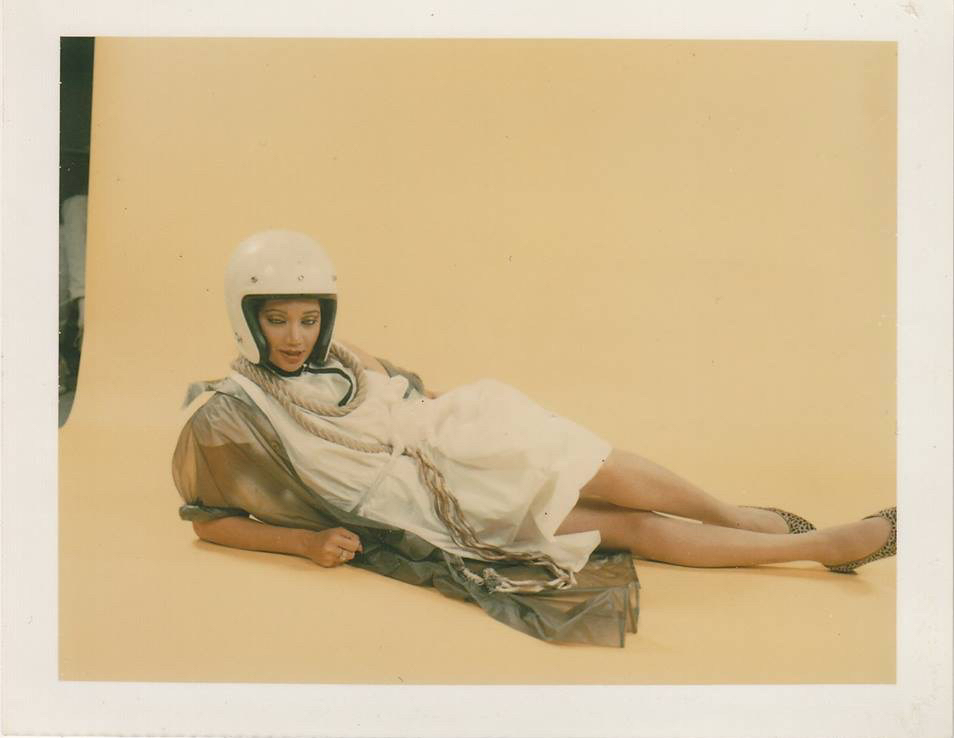
“I’m spiritually 6,000, I’m mentally 98, I’m emotionally 5 and chronologically in between.”
– Asha Puthli, NY Times interview
At a time when the authenticity of art-over-commerce ruled, Asha Puthli made it big in what was then the epicentre of global, cosmopolitan culture. And she did it singularly on her own terms – a self-made woman if there ever was one.

Au courant media exports from India, protractedly packaged, auto-tuned and famous-for-being-famous, leave a hungriness in the absence of conscious substance – of felt art – over the phouf of strategically monetised commodification. In 1969, one Bombay girl, with a whole lotta mojo, and innovative talent to boot, landed up in New York City to plant her flag… and it already had “legend” stamped across it.

“I feel like a global person, my psyche, I think, is very American. My soul and my roots are very Indian. And my career has been more European.”
– Asha Puthli, NY Times interview
Blondie’s Debbie Harry is said to have cited Asha Puthli as an inspiration in, both, her style and her singing. Donna Summer and Giorgio Moroder crafted the disco anthem after exposure to Asha’s classically trained, original, silky, whispered delivery. Andy Warhol, fascinated with Asha’s fresh entré to the NY scene, claimed her for the uber-everything-Studio54-clique.

Jazz legend Ornette Coleman’s 1971 album, SCIENCE FICTION, was the defining point of Asha’s arrival on the American stage of high art and deep music. In his fantastic and expansive essay, DISCO MYSTIC, author and music critic David Keenan writes:
..it is the presence of Indian vocalist Asha Puthli, the woman who fell to earth, that provides the oracular link, the passage to the future of synthesized freak. Puthli was a protégé of John Hammond at Columbia Records, but Hammond failed to find the right vehicle for her combination of classical Indian modulation, sci-fi sex kitten eroticism and Kate Bush-esque performance style until he passed her demo onto Coleman.
Puthli appears on two tracks on Science Fiction – “What Reason Could I Give” and “All My Life” – where the group’s complex rhythms, pulling two ways at once, open out the ballad form in order for her to undress it completely. “What reason could I give,” she sighs, singing from deep inside the track, the third eye of the storm, “to live / Only that I love you / How many times must I die for love / Only when I’m without you / Where will the clouds be / If not in the sky / When I die?”
But just as Coleman helped invent Puthli as a future disco icon, Puthli took Coleman’s science fiction out into the wild. Over a span of ’70s and early ’80s recordings with titles like 1001 Nights Of Love and I’m Gonna Kill It Tonight, Puthli, under the spell of Coleman’s break with the past, minted a form of free-floating ultra-sexualised intergalactic disco that matched hyperventilating time with erotic electronics and surreal sonic environments.
You have to know your musicology to understand what it means that Asha Puthli is held, written and talked about in the same span, breadth and regard as Parliament, Bootsie Collins, Alice Coltrane, Roy Ayers, Pulitzer Prize awarded Henry Threadgill, Grace Jones, Sonny Rollins, Barry White, Bill Laswell, Patti Smith, Nina Hagen, and Don Cherry. This is just a partial list of collaborators and musicians with whom she has recorded, sung or shared a stage, amongst a myriad others who leave starshine furrows in the cosmic wake of their inimitable talent. Asha’s is a level of artistic accomplishment that few, if any, from her generation, or geolocale, could have dreamed to match. Unless, of course, we bring Bombay boy Farrokh Bulsara in the mix – but that’s another Queen for another day.
“When Americans talk about fusion, they talk about the American artists who have gone and brought in Indian elements,” she said. “I’m proud of my Indian heritage and I want to build the bridge and let them understand that someone has come here who can sing on a level playing field — even though it wasn’t a level playing field — without compromise. ‘Hey, guys, I’m talented, so what if I come from another part of the world?’ But it was a one-way traffic, and when I was coming this way, the doors were closed.”
Instead, she got her chance in Europe. After a cheeky appearance on a British talk show, Ms. Puthli was signed to a recording contract with CBS Records in England. On her debut album she aimed for the pop mainstream, working with Elton John’s producer, Del Newman. Amid its hodgepodge of styles, the album, “Asha Puthli,” included “Right on Time,” with a midtempo wah-wah groove and whispery vocals that might have been a template for Donna Summer’s hits a few years later.
– NY Times interview
Giorgio Moroder & Donna Summer LOVED TO LOVE Asha Puthli :
This is Asha Puthli performing in Germany:
This is Donna Summer performing what became an anthem and which skyrocketed her and producer Giorgio Moroder to super-disco-stardom in 1975:
The implication is curious… you decide.
Asha’s originality, as an authentic brightstar will do, invited replication and recombinations – a theme that was to occur again, later in her life, via “that perennial enfant terrible of the Indian English literary establishment” with a fatwa on his head.
Asha’s first, eponymous, solo album at CBS Records has an ode on it’s cover – it describes well what compelled the cynosure of attention to this global-port-city-girl from Bombay :
Asha’s Voice
It’s full of promise and never fails to deliver
It’s a time breaker and a mind-bender
It wings across cultures with a passport stamped STAR
It is Asha’s voice.
It’s a scent to unlock the secrets of the soul,
Asha from the East, Kali, Temple Bells, Peace
Asha from the West, New York, Ornette Coleman, Warhol’s factory, Now
She came from India and belongs to the world.
She excites exaggerations with her beauty, her wit, her fabulous recklessness, all and
any of which would be enough to make a star
Her voice will make her a legend.
It caresses your senses.
It starts you dreaming.
It brings you alive.
It is wanton, and cruel and tender and loving,
It will remind you of others, but you will have heard few like it.
It is fabulous.
It is the future. It is the present. It is the eternal past.
It is ASHA.John Kobal (Author, Broadcaster and one heck of a Fan)

Asha’s biography headlines speak to the iconoclast that she is:
Asha’s sensual, Eastern-influenced cooing over bass-driven grooves on original songs like “Flying Fish” and “Space Talk” provided the blueprint for spacey disco hits like “I Feel Love” and “Love to Love You Baby” by Donna Summer and Giorgio Moroder,[12] and they provided the sonic template for future disco, electronica and femme pop hits by Blondie, Ofra Haza, Kylie Minogue and others. Her disco album, L’Indiana, produced dance-floor hits like “I”m Gonna Dance”. Recognized in critical circles as a fusion pioneer [Ann Powers], Asha’s distinctive, unusual recordings predate fusion of east and west celebrated today in styles like hip-hop, worldbeat, bhangra, and electronica by almost twenty years.
During the 1970s, Asha also branched out into films, starring in lead roles in Merchant Ivory‘s Savages and Bruno Corbucci‘s The Gang That Sold America (Italian title:Squadra Antigangsters).[9]
Her cosmopolitan sense of glamour rocketed her to visibility as a fashion icon: a headliner at Studio 54, she was dressed by A-list designers from Michaele Vollbracht to Manolo Blahnik, and photographed by iconic lensers from Richard Avedon to Andy Warhol.
The new millennium saw Asha re-emerge as an in-demand guest artist on the electronica circuit, appearing on funk experimentalist Bill Laswell‘s Asana Vol. 3, Hey Diwani, Hey Diwana with techno-fusion group Dum Dum Project, and a variety of rare groove and yoga music collections.
In 2005 Asha hit the UK charts once again singing lead vocals on and co-writing Stratus’ Looking Glass from their album Fear of Magnetism.
The Grind Beneath Her Feats:
“I’m a great manipulator. I’m as fake as real can be and as real as fake can be. Legends are made like that. Talking is my drug, singing is my sex.”
– Asha Puthli
On September 11th, 2001 journalist Asjad Nazir wrote an article in the London Times, later republished in The Times of India. The title, RUSHDIE’S ETERNAL ASHA, and Nazir’s content, solidified whispers which had been making the rounds amongst the cognoscenti about Salman Rushdie’s book THE GROUND BENEATH HER FEET. Rushdie’s fictional character, the singer Vina Apsara, appears to be a straight knock-off – and, albeit inadvertent, reluctant and uncredited, the book and the lead character are a paean to Asha Puthli the original.
The Ground Beneath Her Feet, centres around the life of a fictional Indian rock star, Vina Apsara, and how she found fame in the west. Apsara’s character is remarkable for her self-possession, arrogance and total self-belief; she is worshipped and immensely susceptible to adoration.
When the book was published, there was much gossip about how Rushdie had tried to obtain a favourable comment on the novel from Madonna. But Madonna reportedly ordered her copy of The Ground Beneath Her Feet to be shredded, much to the delight of the critics. But rather than asking Madonna, Rushdie should have asked the Asian singer Asha Puthli, who was a prolific artist in the early 1970s but is now almost forgotten. Puthli’s words: “I’m a great manipulator. I’m as fake as real can be and as real as fake can be. Legends are made like that. Talking is my drug, singing is my sex.” The words and sentiment are uncanny: they could so easily have been uttered by Rushdie’s ambitious and vainglorious heroine.
The similarities do not end there. Both Puthli and the fictional Apsara come from Bandra, and both in the course of their careers went on to “transcend all frontiers: of race, skin, religion, language, history, nation, class”, as Rushdie puts it. As a child, Asha was brought up by her aunt Sulochana Shetty, the fictional Apsara’s real name in the novel is Nissa Shetty. Like Apsara, Puthli wanted attention at a very early age and would sing loudly through an open window. She became well-versed in Indian and then western classical music, she learnt Che farò senza Euridice from her classical teacher Hyacinth Brown. Apsara sings this song in the book. Puthli would teach birth control to women in the villages, Apsara, too, goes on a birth control crusade when she is famous. Like Apsara, Puthli’s exotic glamour immediately captured the imagination of the New York jetset in the 1970s. Puthli was a favourite of Warhol and recalls her first meeting with the artist: “He loved taking polaroids and went around pointing a microphone at people. I said, ‘don’t stick that near my mouth’.” In The Ground Beneath Her Feet, Apsara also becomes part of this set, hanging out with a Warholesque New York bohemian artist that Rushdie names Amos Voight.
Asha Puthli eventually retired from singing to bring up her only child, but has recently returned to the spotlight as a guest singer with a band [..]. It was not until this year that she became aware of her starring role in The Ground Beneath Her Feet. Rushdie, while he acknowledges he was aware of Puthli, is adamant that she was not his model. “I do remember Asha Puthli as a singer, but am unaware of any details of her biography, and I did not use her as a model for Vina Apsara,” he said last week. “Whatever similarities there maybe are coincidental.”
Puthli, however, feels very differently about [the] book. “Reading it I felt really eerie. My first instinct was that he must have a scrapbook of my life: it was like someone had stalked me.”
Tantalisingly, when Vina Apsara passes away in the novel, her death is marked by the manufacture of dolls. Puthli means doll.
– The Times of India RUSHDIE’S ETERNAL ASHA
The implication is curious… you decide.
Published days into the global shock of 9/11 at the time, amidst the orgy of news-media pushing the narrative which followed the collapsed buildings, the TOI article sank . And in the mire of it’s copyright hot-potatoe-ness, so did the deal with the Hollywood studio which had optioned Rushdie’s book to produce a feature film.
It is said that “Good artists copy, great artists steal” [artists just create] and that all art is ‘inspired’…
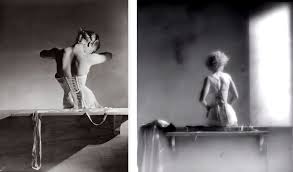
Jean Paul Gaultier for Madonna “Blond Ambition Tour” – 1990
(…first seen on the designer’s runway in 1982);
Asha Puthli’s costume for “Mr. Moonlight” – 1978
Authentic art then – art that is original – is art that resonates, and that which is recognised for a distinctive excellence in legacy, in its ability to educate, inform, enlighten and inspire… it is art that is iconic.
Supernova Afterburn:
Asha, in the meanwhile, went on to grow her legend with her re-emergence from motherhood and onto her usual international-cultural-interventions-of-cool with no less than the royalty of Hip Hop: “Recently, her underground 1970s classic “Space Talk” − a popular tune with David Mancuso‘s The Loft crowd − has become a popular hip-hop break record, sampled by the likes of P.Diddy, The Notorious B.I.G., Dilated Peoples, Governor featuring 50 Cent, and Redman; and her cover of George Harrison‘s “I Dig Love” was sampled in 2005 for the chart-topping track “Reload It” by UK Mobo award winner Kano. She has co-writer credits with Jay-Z, P.Diddy, The Neptunes, Jermaine Dupri, SWV and The Notorious B.I.G. on the track “The World is Filled” from the multi-platinum album, Life After Death.” [Biography]
Morphing easily from superfly progenitor of the Disco-era, Asha has assumed the elegant mantle of a well owned queendom, and added altruism to her already burgeoning repertoire. Just like the life she has charted, here is a woman of our times to celebrate with abandon.
Asha Puthli continues to influence and inspire artists, musicians, designers, filmmakers, ’70’s archivists and more. Asha, nor her art, is slowed down by age, geography, apparent categorization, nor relegation to a by-gone-relevance. Ever transformational, and ever manifesting, her most recent explorations are with electronic musicians and composers, and a lead role in the soon to-be-released film MAIYA which premiered at IFFLA.

August Fröhls (Aman Sandhu & Swapnaa Tamhane)
In collaboration with Asha Puthli
“I’m a free spirit. My mind always operates on the in-betweens, like the microtones in music. I’m an artist, and it’s difficult for artists to draw lines. We draw circles — concentric and eccentric circles.”
– Asha Puthli, NY Times interview
INTERSTELLAR ICONOCLAST : “..into deep space for eternity”
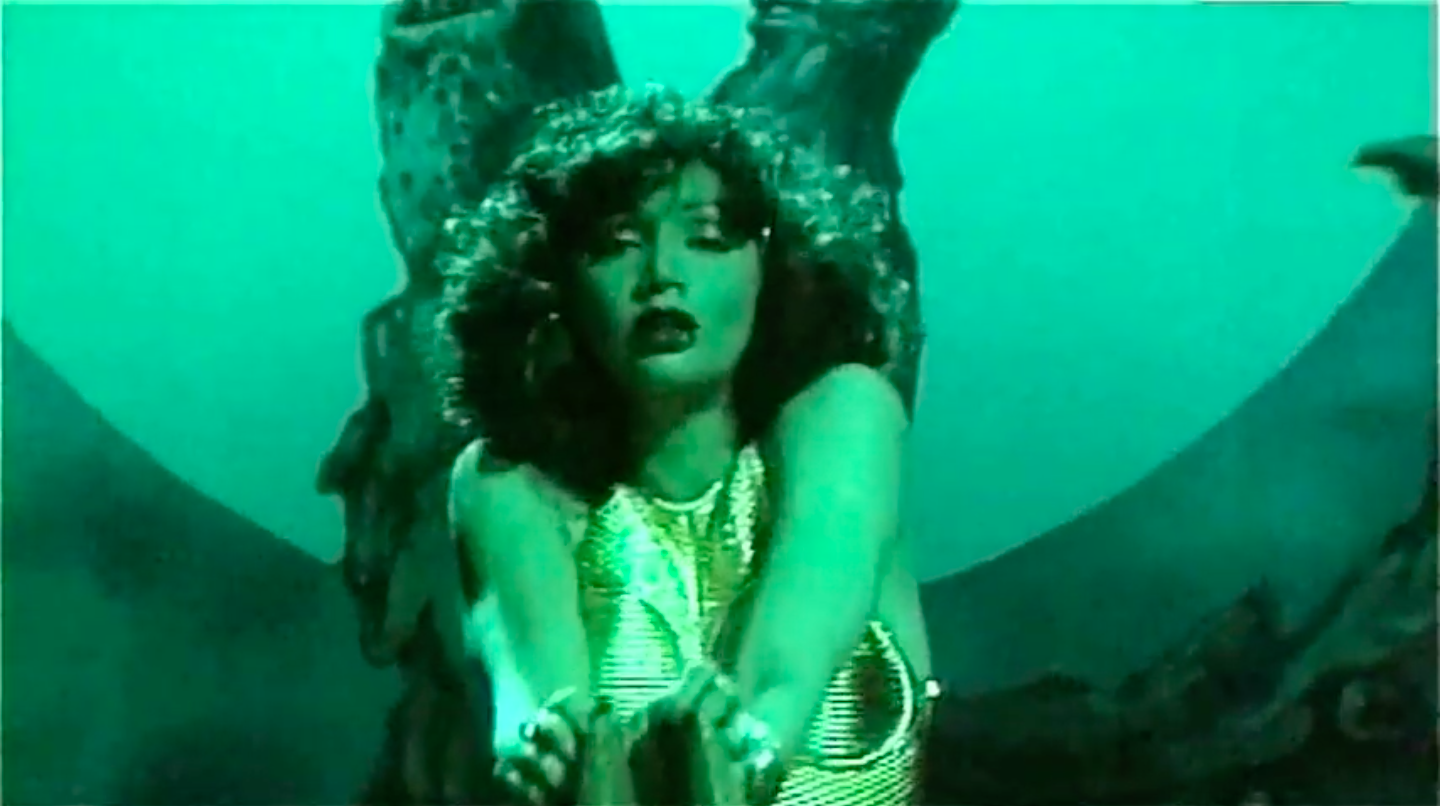
In 2009 Asha Puthli’s most iconic disco track, SPACE TALK, was transmitted into deep space from Goonhilly, the British Satellite Earth Station, to celebrate the 40th anniversary of the moon landing.

SPACE TALK, floats out in the cosmos, carrying her voice with her one-nation-under-a-groove message for perhaps alternate dimensions and species to discover… and to vibe with.
Now that’s a legacy!
▼ ▼ ▼

On October 19th, 2018 ASHA PUTHLI’s was the first ever RED BULL MUSIC ACADEMY LECTURE in India – and the last of the global Musicology sessions. The anthology of the formidable RBMA Lecture series now form one of the most valuable, worldwide research and academic archives of music history.
“Every time I return to Mumbai it’s an ‘ET come home’ moment. The minute my feet touch the ground it is a joyful, emotional, and spiritual experience. It is thrilling to see how the music landscape in India has changed, with so many more women now involved in music and the music business. I am happy to be able to share my experiences as the first Indian woman to break into American mainstream music — at a time when boy bands were at the top echelon of record label demographics, and female solo artists were at the bottom of the tier. I feel blessed to be given this opportunity and hope my anecdotes can amuse, educate, empower or encourage the women in our audience,” says Asha Puthli.
After the live Lecture, the ever glorious Diva Asha Puthli performed some of her disco anthems to a full-house, with the Bombay act MADBOY (Imaad Shah) and SABA AZAD at the G5A Foundation for Contemporary Culture.


▼ ▼ ▼
by Deepti Datt
This article is the first in a series describing the subjects of a five-narrative art installation, INTERSTELLAR ICONOCLASTS, on Indian women and their engagements to journeys with physical, literal and conceptual Space.
Asha Puthli, her life and her work, her internationalism, her fashion, and her dope, sparkling chutzpah, are a grand influence and inspiration informing my own creative work.
Asha, a living legend, is one of the subjects of my functional-art light and immersive VR installation project, INTERSTELLAR ICONOCLASTS, @ The Story of Space Festival 2017 in Goa, India. [ Previous @ The Story of Light 2015 ]
– dd
A conceptual documentary short-film on the Indian jazz singer and international superstar ASHA PUTHLI. The film is from a larger project, INTERSTELLAR ICONOCLASTS™️, an interdisciplinary, multimedia installation on five, iconic, Indian women who traversed conceptual, literal, and philosophical space ‘far beyond the final frontiers’. “THE WOMAN WHO FELL TO EARTH” was screened for the studio audience at the first Red Bull Music Academy Lecture in India, with ASHA PUTHLI, at G5A Foundation for Contemporary Culture – Mumbai, October 2018




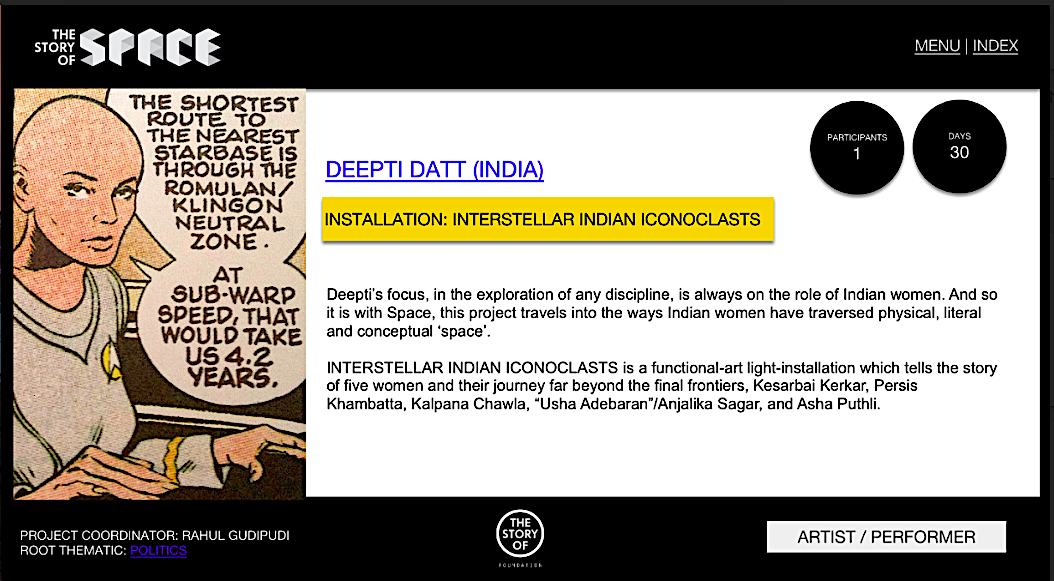
Asha Puthli has also been a great personal influence and generous mentor to my scriptwriting for A.I.R. (working title) “a 70s Rock ‘n Roll Adventure”.
– – – – – – know more – – – – – –
BBC Giles Peterson interview with Asha Puthli – Pt I
BBC Giles Peterson interview with Asha Puthli – Pt II
(Youtube video compilation via Carsten Reinecke)
BBC World Service The Arts Hour

 ASHA PUTHLI Exhibit at the GRAMMY MUSEUM, Los Angeles
ASHA PUTHLI Exhibit at the GRAMMY MUSEUM, Los Angeles
Asha Puthli – Partial Discography
Discography
Albums
- Asha Puthli (CBS) 1973
- She Loves to Hear the Music (CBS) 1974
- The Devil is Loose (CBS) 1976
- Asha L’Indiana (TK Records) 1979
- 1001 Nights of Love (Polygram) 1980
- I’m Going to Kill It Tonight (Autobahn) 1981
- Only the Headaches Remain (Polygram) 1982
- Asha: The New Beat of Nostalgia (Top of the World Records) 1998
EP
- Angel Of The Morning/Sound Of Silence/Sunny/Fever (Columbia – ECHK 607) – 1968
Singles
- Love/I Am A Song (Sing Me) (CBS, S CBS 1910) – 1973 (promo)
- Right Down Here/I Dig Love (CBS, CBS 2203) – 1974 (Germany)
- One Night Affair/Sally Go Round The Roses (CBS, CBS S 2415) – 1974
- The Devil Is Loose/Space Talk (CBS, CBS 4623) – 1976
- Jealousy/Jealousy (Instrumental Version) (Eurovox, VOX 8039) – 1977
- I’m Gonna Dance/Good Night (CBS, CBS 6124) – 1978
- Mr. Moonlight/I’ll See You Around (CBS, CBS 6512) – 1978
- Lay A Little Love/1001 Nights Of Love (Autobahn Records, 6830 314) – 1979
- I’m Gonna Dance/Music Machine (Dedication To Studio 54) (T.K. Disco, 138) – 1979 (U.S.)
- The Whip/Latin Lover (Autobahn Records – 6198 281) – 1979 (Germany)
- The Whip/Sound of Money (CBS, CBS 7330) – 1979 (Italy)
- I’m Gonna Kill It Tonight/How I Feel (Autobahn Records – 6005 027) – 1980
- Love Song Of A Divorced Woman/My Love Won’t Let You Dawn (Carrere – 49.805) – 1981
- Fall Out Dust/We’re Gonna Bury The Rock With The Roll Tonight (Vertigo – 6005 177) – 1981
- Right Down Here/Space Talk (Jazzman – JM.054) – 2007
Appears on
- Science Fiction – Ornette Coleman (Columbia) 1971
- Mirror – Charlie Mariano (Atlantic) 1972
- Squadra Antigangsters (Cinevox) 1979 – soundtrack
- Easily Slip Into Another World – Henry Threadgill (Novus) 1989
- Loft Classics XII – Various Artists (Loft Classics) 1995
- Groovy Vol 1: A Collection of Rare Jazzy Club Tracks – Various Artists (Irma) 1996 – compilation
- Groovy Vol 2: A Collection of Rare Jazzy Club Tracks – Various Artists (Irma) 1997 – compilation
- Export Quality – Dum Dum Project (Times Square / Groovy) 2001
- Walking on Music – Various Artists (Corona) 2001 – compilation
- Psychedelic Jazz and Soul from the Atlantic and Warner Vaults – Various Artists
- (Warner UK) 2001 – compilation
- Mpath – Wanderer – Gardner Cole (Triloka) 2003
- Accerezzami – Fausto Papetti (n/a) 2003
- Chillout in Ibiza, Vol. 5 – Various Artists (Smart) 2003 – compilation
- The Karma Collection (Ministry of Sound) – Various Artists 2003 – compilation
- Asana Vol 3: Peaceful Heart – Bill Laswell (Meta) 2003
- The Trip – Tom Middleton, Various Artists (Family Recordings) 2004 – compilation
- Fear of Magnetism – Stratus (Klein) 2005
- Asana OHM Shanti – Bill Laswell (Meta) 2006
- Cosmic Dancer – Voyage Three – Various Artists (Cosmic Dancer) 2006 – compilation
(* Thanks to Carsten Reinecke, some great Asha Puthli material archived on his youtube channel)
– – – – – –
. . . . . . . . . . . . . . . . . . . .
D I S C L A I M E R
The views and opinions expressed are the authors’ own and do not necessarily reflect the official policy or position of Civilianaire Magazine. Any content provided by our bloggers or authors are of their opinion and are not intended to offend or malign any religion, ethnic group, club, organization, company, individual and/or anyone or anything.


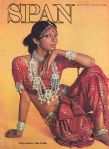





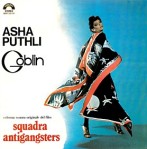
































Amazed by yor well researched, wonderfully written, beautifully composed and lovingly visualized post / article on Asha Puthli!
Also big thanks for having selected my “warholised” pic of Asha’s album cover, having chosen my “1001 Nights of Love” homage video and having selected the (split in two parts) BBC Interview clips (that I rescued / complied on YouTube).
Feeling honoured,
cheers,
Carsten
LikeLike